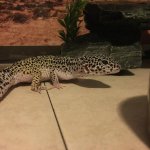It is a difficult subject to advise keepers on, because so many do not provide exacting husbandry. There is some truth to both sides of the argument, and any loose particulate presents some level of risk, the point of discussion is how much.
You can safely ignore anybody who still believes a substrate is what causes impaction and that providing such will inevitably kill your Gecko, those individuals simply do not understand the subject matter.
The reality is that the risk when providing an appropriate loose/semi-loose substrate is close to non-existent if the animal is being cared for appropriately and is in good health. By that I mean, is well hydrated, heated, supplemented and fed. If any one of those things falls out of balance, so too will its digestive ability and therefore risk of health issues increase many-fold.
However, there are many benefits to providing a natural, life-enriching substrate. As you mentioned, sand alone is not a suitable substrate for almost any commonly kept lizard, as all but a rare few are not truly sand-dwelling in the wild. An appropriate mix is the best choice for any species.
Leopard Geckos love to dig and forage for their food, denying them this opportunity is not something I am comfortable with having seen how much take advantage of it. I provide all my Leos with a sand/soil/clay mix which is packed down well. Hides are commonly created by the Geckos themselves beneath slate rock and cork flats I provide them.
The bottom line is this - if you can be certain your Gecko is in good health and your husbandry is appropriate, the benefits in providing a natural substrate are great, if you cannot be sure of this, stick with something simple like textured tiles until you are more experienced.
Hopefully that was helpful, any more questions, let me know.



